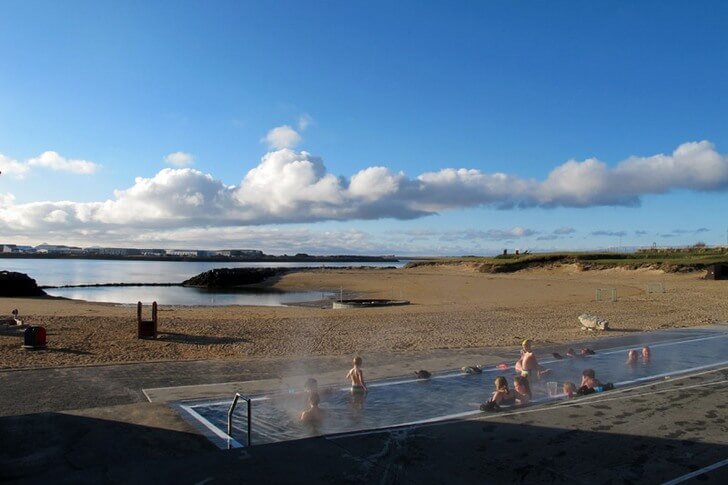Reykjavik is a harsh “smoky bay”, where the Norwegian Viking Arnarson arrived in ancient times to build his home on its shores. The capital of Iceland is special. It fits so harmoniously into the magnificent northern landscape that it seems as if the soaring spire of the Church of Hallgrimskirkja is the top of a flaming volcano, and the northern lights are about to light up on the glass walls of Harpa.
Reykjavik has a unique aura. Its charm captures the traveler from the first minutes. There are no ancient buildings here, but there is a grandiose Perlan and modern museums. A tourist will not see traditional cathedrals and cobbled squares in the capital of Iceland, but he will fully enjoy a walk along the embankment, which offers stunning views of the ocean.
What to see and where to go in Reykjavik?
The most interesting and beautiful places for walking. Photos and a short description.
- Concert Hall Kharpa
- Sculpture Sun Voyager
- Laugavegur street
- Reykjavik City Hall
- Hyovdi's house
- Perlan
- Church of Hallgrimskirkja
- Reykjavik Cathedral
- National Museum of Iceland
- Reykjavik Art Museum
- Arbaeyarsafn Open Air Museum
- Maritime Museum Vikin
- Einar Jonsson Museum
- Phallological Museum
- Exhibition Reykjavik 871 ± 2
- Aurora Reykjavik
- Museum Whales of Iceland
- Column of Peace
- Lake Tjörnin
- Nautholsvik beach
Concert Hall "Kharpa"
The concert hall is located in the city harbour. Its grand opening took place in 2011. This irregularly shaped contemporary building with a glass-lined façade was designed by Danish architect H. Larsen and designer O. Eliasson. There are four concert venues with excellent acoustics in Kharp. The National Symphony Orchestra performs here and the Icelandic Opera gives performances.
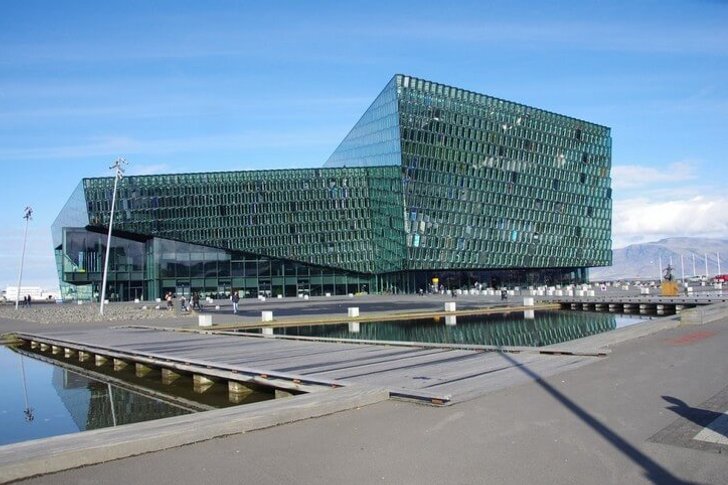
Sculpture "Sun Voyager"
Steel statue, which was created according to the sketches of the sculptor J. G. Arnason. Contrary to popular belief, the whimsical metal figure does not depict a Viking ship, but symbolizes the desire for knowledge of the unknown and new discoveries. It is best to admire the sculpture at sunset, when the sun ball descends below the horizon and illuminates the steel frame with faded rays.
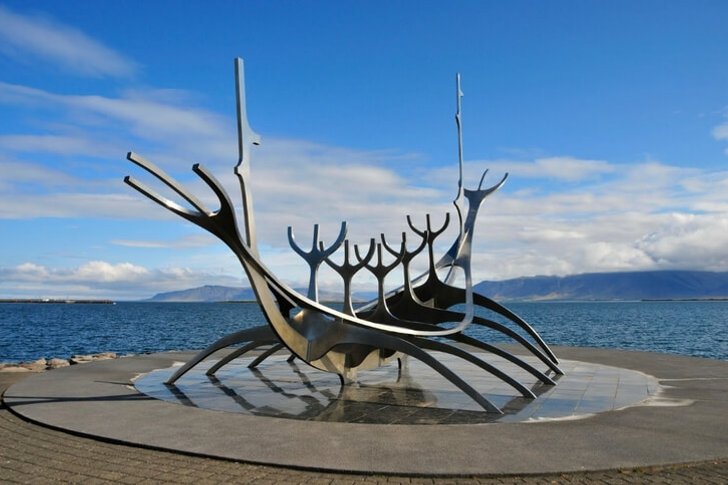
Laugavegur street
The alley is located in the center of Reykjavik. Translated from Icelandic, its name means "the road to the hot spring." It is literally strewn with shops with seductive bright shop windows. Laugavegur Street is the main commercial artery of the city. During the day, you can go shopping or just take a walk, and at night visit one of the many bars and enjoy the fun atmosphere.

Reykjavik City Hall
A modern building from 1992, located in the center of the Icelandic capital on the shores of Lake Tjörnin. It seems as if the walls of the building grow straight out of the water. Here is the headquarters of the city administration, as well as halls for conferences, exhibitions, concerts and performances. The attention of tourists is attracted by the 3D map of Iceland, which is located inside.

Hyovdi's house
An early 20th century building in the sparsely populated northern part of Reykjavik. The house was built in 1909 for the French consul in the Art Nouveau architectural style. For some time, the Icelandic poet and journalist E. Benedihtsson lived in it. In 1986, a summit was held in Khövdi, in which R. Reagan and M. Gorbachev took part. The house is closed to the public, so tourists can only view it from the outside.
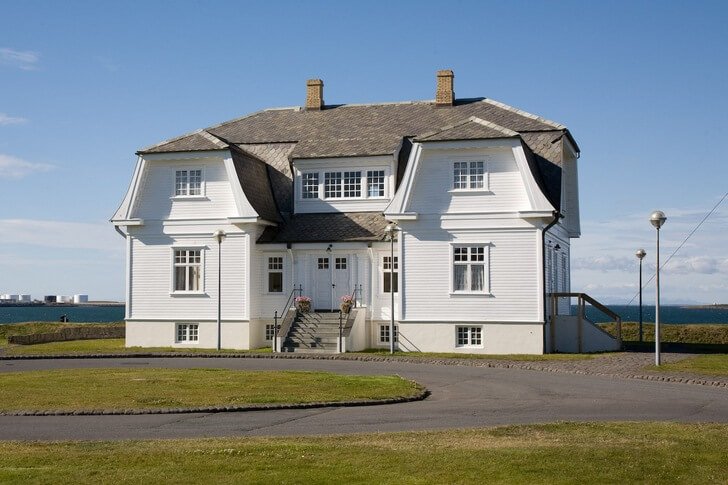
Perlan
The building is located on the top of the Oskulid hill. In fact, this is a boiler room in which water comes from thermal springs. On the ground floor there is an exhibition gallery where concerts, fairs and vernissages take place. The fourth floor is occupied by an observation deck with telescopes and several shops, and the fifth is a restaurant with a rotating dome, which is illuminated by bright lights at night.
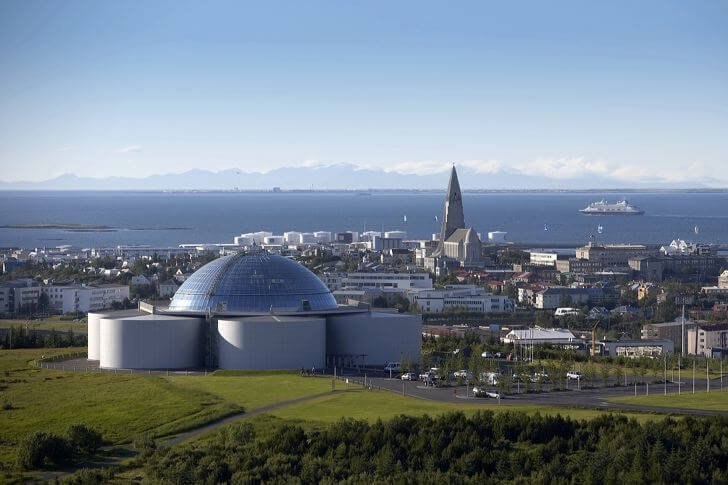
Church of Hallgrimskirkja
The grandiose Lutheran temple, which is considered one of the most picturesque sights of Reykjavik. It was built from 1945 to 1986. The work was delayed due to funding difficulties and the protest of the townspeople against the external appearance of the church. Despite all the obstacles, the building turned out just magnificent. It looks like a flame frozen in ice and like a mountain peak directed to the sky.
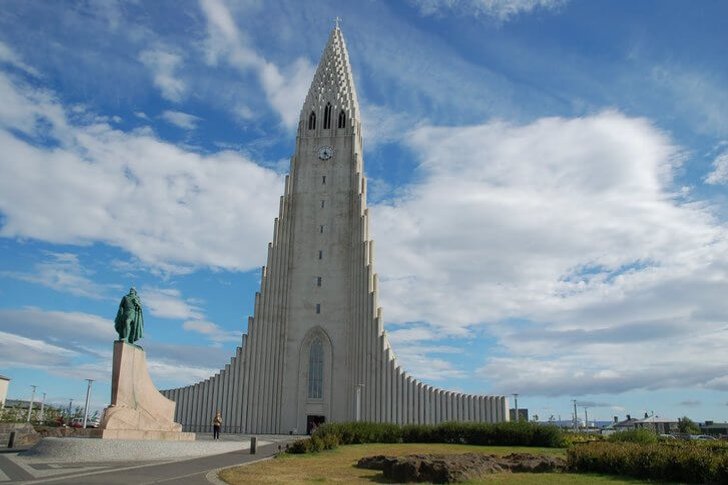
Reykjavik Cathedral
The main city temple looks rather modest against the backdrop of the outstanding church of Hallgrimskirkja. It was built at the end of the 18th century in the Danish colonial style, which is distinguished by simplicity, conciseness of forms and the absence of lavish decor. The cathedral is more like a parish church than a metropolitan church. Near the building there is a green lawn, where in good weather the townspeople take a rest.

National Museum of Iceland
Acquaintance with the museum's collection is an immersion in the mysterious world of Iceland: in the harsh times of Viking raids, pagan rituals and the dark era of the Early Middle Ages. Here you can see a figure of Thor, which is over 1000 years old, and the first Bible in Icelandic, as well as see national costumes, weapons and jewelry. The museum has a modern scientific library.
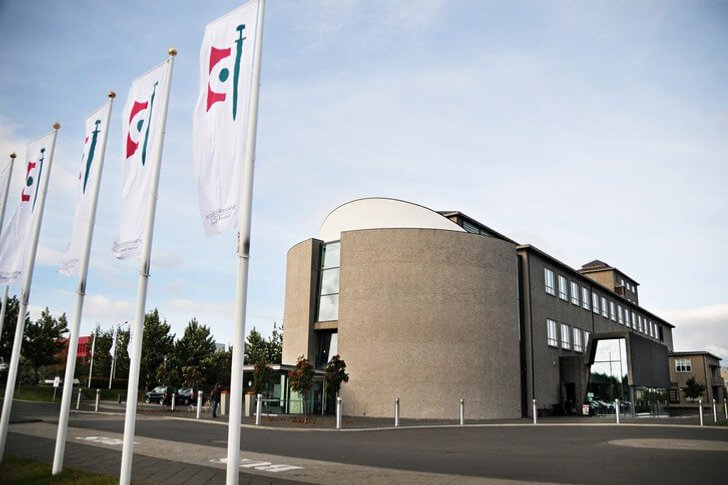
Reykjavik Art Museum
The exposition is located in three buildings located in different parts of Reykjavik. In the first building, a collection of paintings is exhibited, in the second - sculptures, in the third - contemporary art. The museum has many works by Icelandic masters. Among them are paintings by artists J. Sveinson and G. Gudmudson, as well as sculptor A. Sveinson. The halls of the gallery are often used for theatrical performances and concerts.
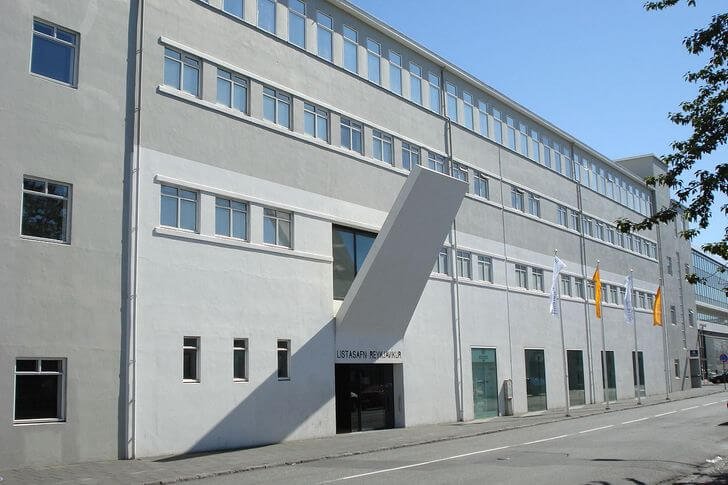
Arbaeyarsafn Open Air Museum
The exposition is located outdoors. It is a reconstruction of Iceland's past. Visitors can see the traditional houses of the inhabitants of the island, learn about the traditions and daily activities of people. The complex was opened in 1957 on the site of abandoned farms. Some of the buildings were restored (they were included in the collection), the other part was transported from the center of Reykjavik. In addition to residential buildings, there is a church, a smithy, workshops, warehouses.

Maritime Museum "Vikin"
The museum collection is entirely devoted to navigation. The most grandiose exhibit is the ship "Odin", which for a long time was engaged in rescuing wrecked ships. Also, the attention of visitors will be attracted by the tug "Magni" (the first ship built in Iceland). The museum regularly hosts temporary exhibitions dedicated to the maritime theme. There is also a permanent exhibition.
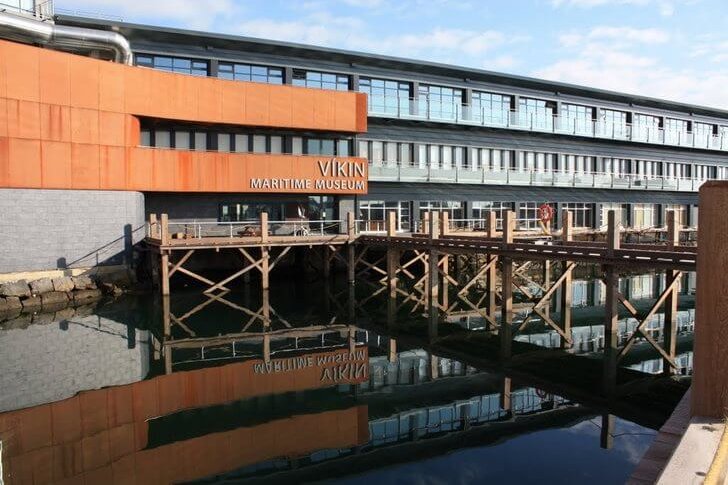
Einar Jonsson Museum
An exhibition of works by the famous Icelandic sculptor E. Jonsson, who, thanks to his remarkable talent, has achieved recognition not only in his homeland, but throughout the world. The museum was founded in 1923 in a building designed by the master himself. The main exhibition area is located in the garden, where several dozen sculptures stand among trees and flowers. Nearby is the Church of Hallgrimskirkja.

Phallological Museum
The collection of this unusual museum consists of preserved animal phalluses. In 2011, a human organ appeared here. The smallest exhibit must be viewed through a magnifying glass, the largest weighs 70 kg and reaches a length of 170 cm. The exhibition was organized by S. Hjartarson, who has been collecting phalluses since 1974. In 1997, he decided to make them public.
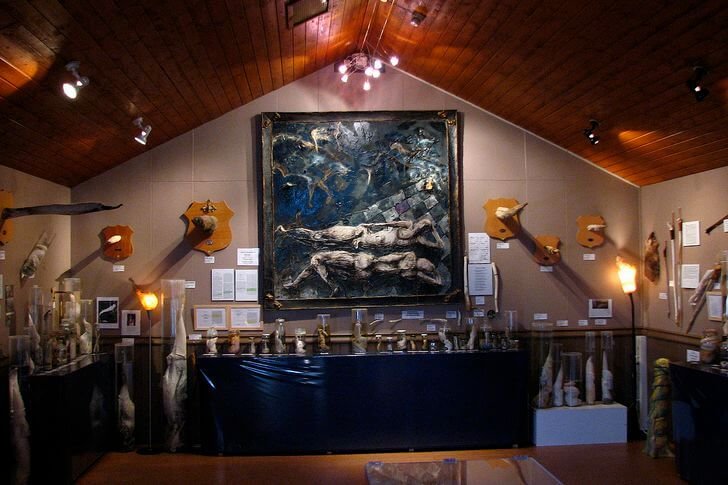
Exhibition "Reykjavik 871 ± 2"
A small interactive exhibition dedicated to the history of Reykjavik. There are few real exhibits, mostly visitors are invited to watch films and videos about the features of the construction of urban dwellings and the life of the first settlers of the island. The entire theme of the museum revolves around the excavations of the courtyard, the approximate age of which is 871 years. Hence the name of the exhibition.
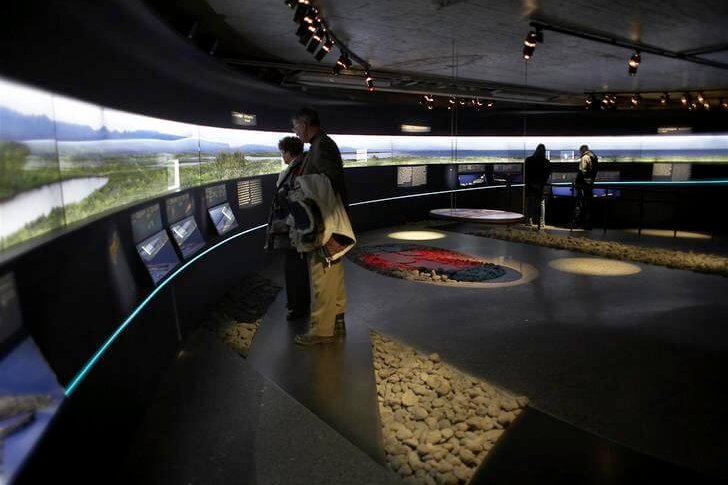
Aurora Reykjavik
Northern Lights Center, where you can learn everything about this amazing natural phenomenon and see it on large screens. The complex is divided into four sections. In the first one, visitors are told about the history of the origin of the northern lights, in the second they show it in all its glory, in the third you can hear stories and legends collected from around the world, in the fourth there is an exhibition of photos of the lights.

Museum "Whales of Iceland"
The museum opened in 2014. It is located in the old harbor within walking distance of the center of Reykjavik. The collection consists of 23 life-size whale models. The exhibits are created with amazing accuracy. At a close distance, you can even see the scars on the skin of animals. With the help of virtual reality attractions, visitors can go “swimming” with dolphins and whales.
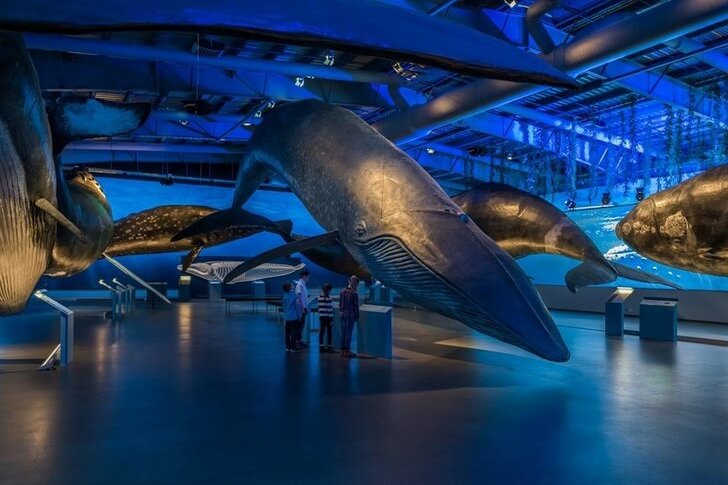
"Column of Peace"
Memorial on the island of Videy, created in memory of John Lennon in 2007. The design was developed by the widow of musician Yoko Ono. The column is a granite pedestal, on which the inscription “Imagine peace” (imagine peace) is displayed in 24 languages. Rays of light shoot out from the base, reaching an incredible height of 4 km in clear weather. These jets of light are created using powerful spotlights.

Lake Tjörnin
The reservoir is located in the heart of Reykjavik. The main city attractions are concentrated around it, which are reflected on the mirror surface of the water. Geese, ducks and swans nest on the lake. In winter, the reservoir freezes, but so that the birds do not die, it is thawed with the help of thermal springs (not all, only a small part). Tjernin is considered one of the cleanest lakes in the world.
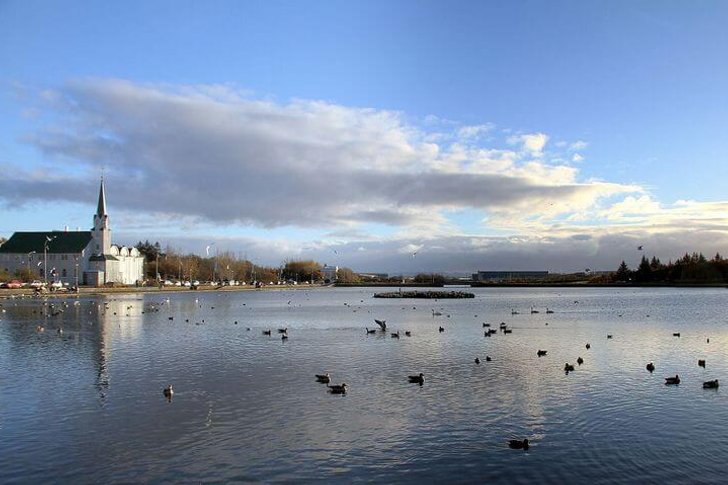
Nautholsvik beach
Geothermal beach in the suburban area of Reykjavik. Despite the fact that even in July-August the water temperature in the Atlantic Ocean does not rise above 15 ° C, in the coastal zone near Nautholsvik it stays at 38-42 ° C. The secret lies in the thermal springs that heat the sea water. The area for comfortable swimming is an open-air swimming pool located on the shore of the bay.
